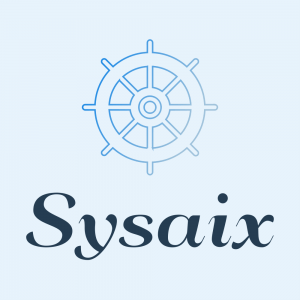
In the realm of modern software development and deployment, containerization has revolutionized the way applications are built, deployed, and managed. Among the leading container orchestration platforms, OpenShift Container Platform stands out as a powerful and versatile solution that enables developers and operations teams to streamline the container lifecycle. In this comprehensive guide, we’ll delve into the world of OpenShift Container Platform and explore various strategies to optimize your containerized applications for maximum efficiency and scalability.
- Understanding OpenShift Container Platform: A Primer Before delving into optimization techniques, it’s essential to have a solid understanding of OpenShift Container Platform. Explore the core concepts of OpenShift Container Platform, including its architecture, components, and deployment models. Gain insights into how OpenShift Container Platform leverages Kubernetes to simplify container orchestration and enhance application scalability and resilience.
- Designing Highly Available Applications on OpenShift Container Platform Ensuring high availability is crucial for mission-critical applications. Discover how to design and deploy highly available applications on OpenShift Container Platform using strategies like replication, load balancing, and fault tolerance. Explore features like pods, services, and replica sets to distribute traffic and handle failures effectively.
- Autoscaling and Performance Optimization Optimizing performance and scalability is paramount for applications experiencing varying workloads. Learn how to leverage OpenShift Container Platform’s autoscaling capabilities to automatically adjust resources based on application demand. Explore horizontal and vertical scaling techniques and delve into performance profiling and tuning to fine-tune your application’s performance.
- Efficient Resource Management Managing resources efficiently is vital to ensure optimal utilization and cost-effectiveness. Discover how to set resource limits, requests, and quotas for your OpenShift Container Platform applications to prevent resource contention and enhance resource allocation. Explore advanced techniques like resource profiling, pod affinity, and anti-affinity to maximize resource utilization and application performance.
- Continuous Integration and Deployment (CI/CD) Pipelines OpenShift Container Platform seamlessly integrates with popular CI/CD tools, enabling efficient application delivery and continuous integration workflows. Explore how to leverage OpenShift Container Platform’s built-in capabilities or integrate third-party tools to set up robust CI/CD pipelines. Learn best practices for automating build, test, and deployment processes to ensure rapid and reliable application delivery.
- Security Best Practices for OpenShift Container Platform Applications Security is a critical aspect of any application deployment. Explore OpenShift Container Platform’s security features and learn how to implement secure container practices. Discover how to leverage OpenShift Container Platform’s built-in security controls, such as role-based access control (RBAC), network policies, and image scanning, to protect your applications from vulnerabilities and unauthorized access.
- Monitoring and Logging in OpenShift Container Platform Monitoring and logging are essential for maintaining the health and performance of your applications running on OpenShift Container Platform. Explore various monitoring and logging options available, such as Prometheus, Grafana, and Elasticsearch. Learn how to set up comprehensive monitoring and logging solutions to gain valuable insights into your application’s behavior and troubleshoot issues efficiently.
OpenShift Container Platform offers a robust platform for deploying and managing containerized applications at scale. By understanding the intricacies of OpenShift Container Platform and implementing optimization strategies, you can maximize the potential of your containerized applications. Embrace the power of OpenShift Container Platform and embark on a journey of enhanced application performance, scalability, and efficiency in the dynamic world of modern software development.
In the evolving landscape of modern application development and deployment, containerization has become the go-to technology for its lightweight and scalable nature. However, there are instances where running virtual machines (VMs) is still necessary due to specific requirements or legacy applications. OpenShift Virtualization comes to the rescue, seamlessly integrating virtualization with the power of Kubernetes. In this article, we’ll explore the world of OpenShift Virtualization and how it empowers organizations to leverage the benefits of VMs within the Kubernetes ecosystem.
- Understanding OpenShift Virtualization: An Overview OpenShift Virtualization is an extension of the OpenShift Container Platform that allows organizations to run VMs alongside containers on the same Kubernetes platform. Dive into the fundamentals of OpenShift Virtualization and understand how it combines the agility and efficiency of containers with the versatility of VMs. Explore its architecture, components, and the underlying technologies that make it possible.
- Advantages of OpenShift Virtualization Discover the compelling advantages of using OpenShift Virtualization. Explore scenarios where VMs are beneficial, such as running legacy applications, achieving hardware isolation, or leveraging existing VM-based infrastructure. Learn how OpenShift Virtualization simplifies the management of both containers and VMs, reducing complexity and enhancing flexibility.
- Getting Started with OpenShift Virtualization Delve into the practical aspects of getting started with OpenShift Virtualization. Learn how to install and configure OpenShift Virtualization within your existing OpenShift Container Platform cluster. Understand the requirements, including hardware and networking considerations, and explore the installation process step by step.
- Running and Managing Virtual Machines with OpenShift Virtualization Once OpenShift Virtualization is set up, it’s time to start running and managing VMs. Discover how to create virtual machine instances, define their resource requirements, and manage their lifecycle using Kubernetes-native APIs and tools. Explore advanced features such as live migration, snapshots, and persistent storage for VMs running on OpenShift Virtualization.
- Integrating VMs and Containers in a Hybrid Environment One of the unique strengths of OpenShift Virtualization is the ability to seamlessly integrate VMs and containers within a hybrid environment. Learn how to orchestrate and manage applications that span both containers and VMs, leveraging the best of both worlds. Explore scenarios where VMs and containers can work together harmoniously, enhancing application deployment and scalability.
- Scalability and Performance Considerations Scalability and performance are critical factors when running VMs alongside containers. Explore best practices for optimizing performance and scalability in OpenShift Virtualization. Understand resource management techniques, such as setting resource limits, requests, and quotas for VMs. Explore scaling options for both containers and VMs to ensure efficient resource utilization.
- Security and Compliance in OpenShift Virtualization Maintaining a robust security posture is essential when working with VMs and containers. Discover security considerations specific to OpenShift Virtualization and learn how to implement best practices. Explore techniques like network segmentation, access controls, and image scanning to protect your VMs and containers from vulnerabilities and unauthorized access.
OpenShift Virtualization opens up new possibilities by seamlessly integrating VMs into the Kubernetes ecosystem. By leveraging the power of OpenShift Virtualization, organizations can achieve flexibility and agility while running both containers and VMs on a single platform. Embrace the potential of OpenShift Virtualization and unlock the benefits of combining containers and virtual machines for a comprehensive and versatile application deployment strategy.







